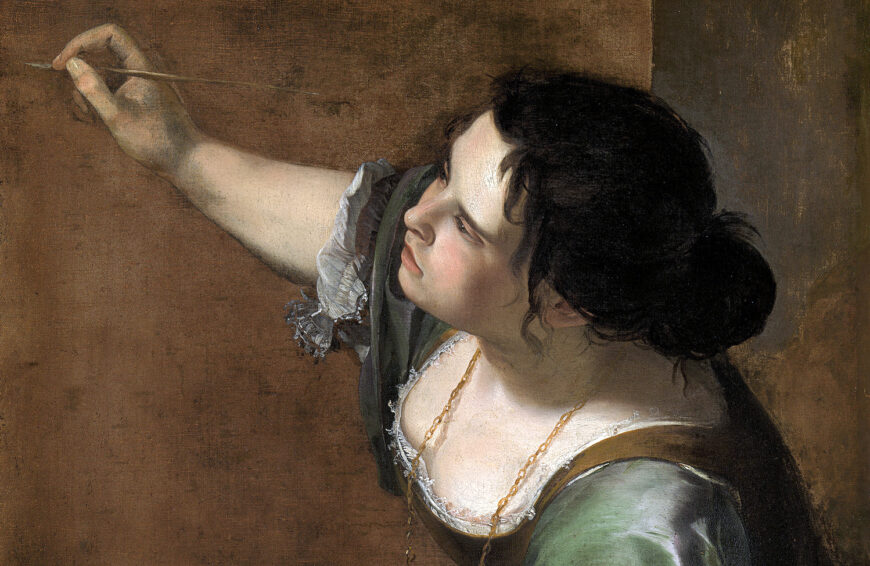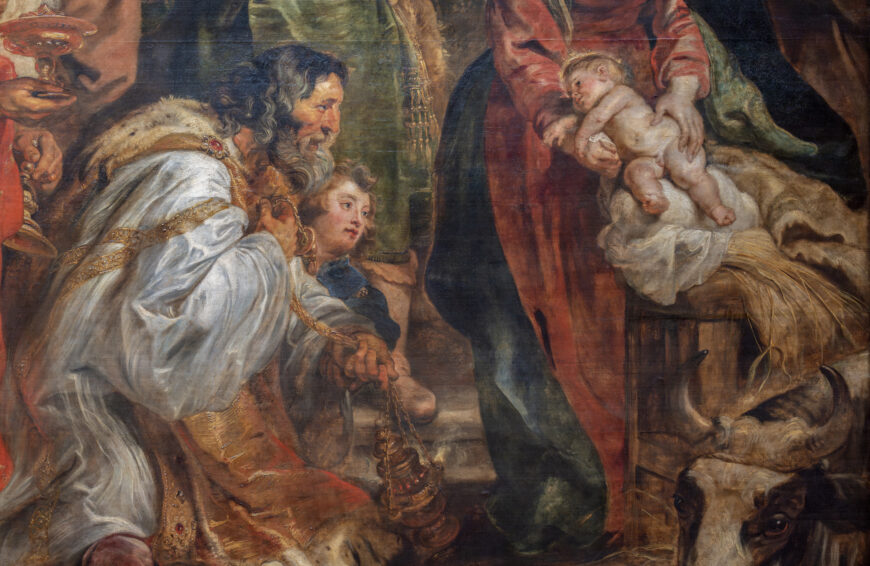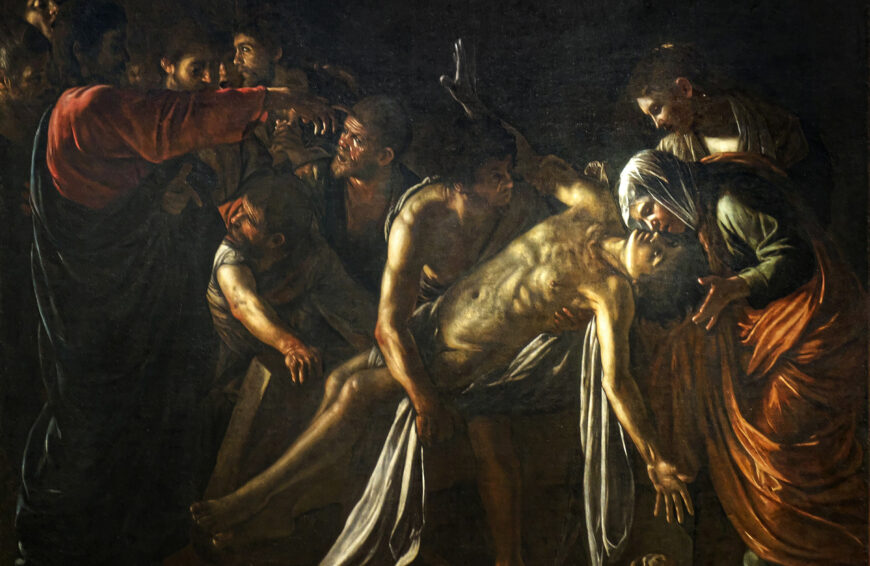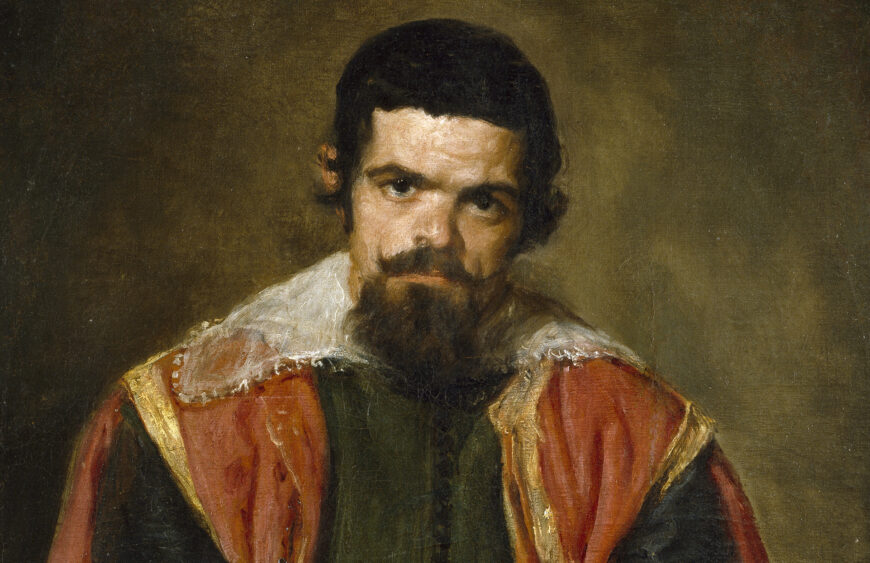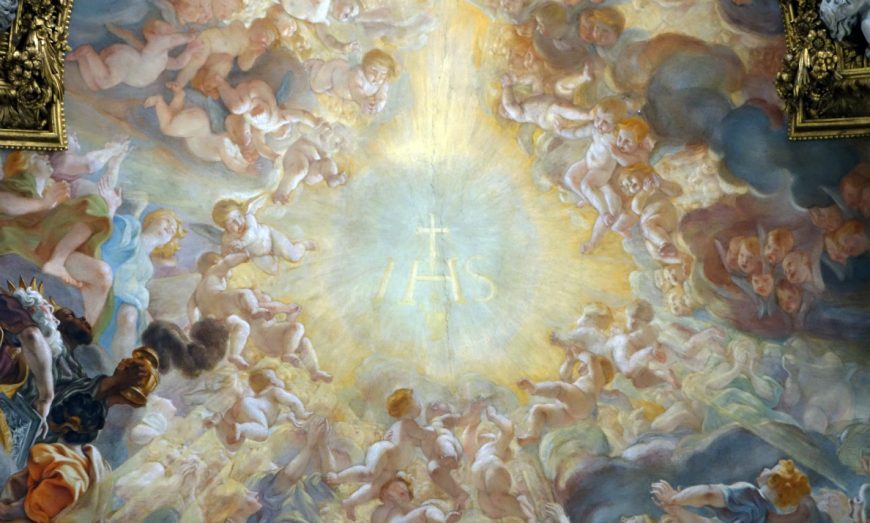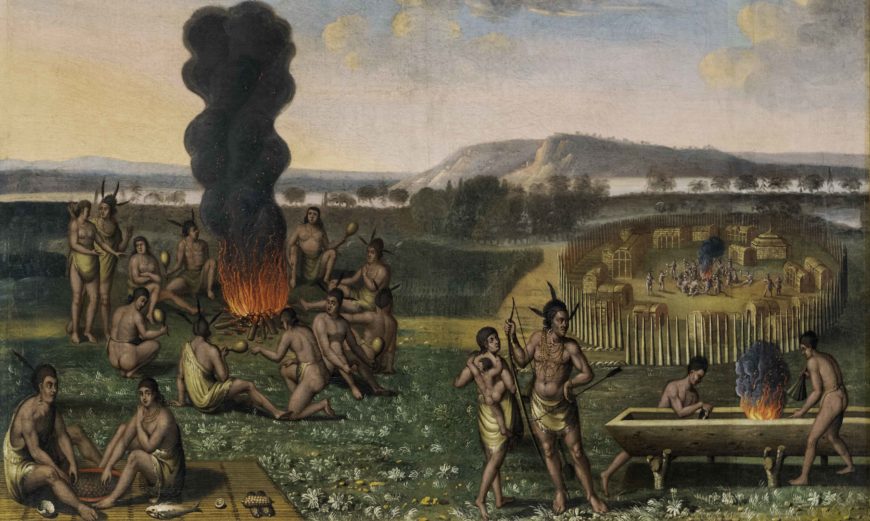
Peter Paul Rubens, Rubens and Isabella Brant in the Honeysuckle Bower, c. 1609–10, oil on canvas, 178 x 136.5 cm (Alte Pinakothek, Munich)
You can almost smell the sweet fragrance of honeysuckle emanating from the garden alcove in this full-length portrait by Peter Paul Rubens of Rubens and his new wife, Isabella Brant. Few paintings convey the promise of wedded bliss and marital fidelity as this double portrait, likely painted as a gift for Isabella’s father.
Wedded bliss and marital fidelity
Seated in their “garden of love,” the painting speaks of a steadfast and tender strength between husband and wife. This is exemplified by the clasped right hands of the united couple (to which Rubens’s left index finger points) that binds them in faithfulness forever, unto and after death.
Although Rubens sits higher than his wife on a stool, the painting nevertheless suggests, if not a marriage of equals, then a loving partnership. Sadly, Isabella would die around fifteen years later, at the age of 34, probably of bubonic plague, which left Rubens devastated. Their first child, Clara Serena, also died prematurely at only 12 years old. Their sons lived on into adulthood: Albert became a scholar and philologist, and Nicolaas became Lord of Rameyen. As modern viewers, awareness of the early deaths of Isabella and Clara Serena may add a melancholy air to the painting.
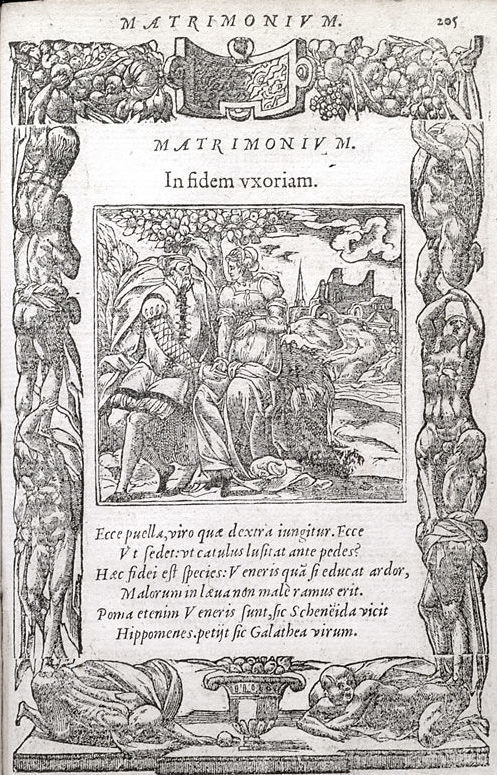
In fidem uxorium (conjugal fidelity) from Andrea Alciato, Emblematum liber or Emblemata, Lyons: Macé Bonhomme for Guillaume Rouillé in Lyons, 1551 (Stirling Maxwell Collection, University of Glasgow Library)
The painting’s composition draws on the woodcut for the motto In fidem uxorium (conjugal fidelity) from Andrea Alciato’s (also known as Alciati) Emblematum liber or Emblemata; the first ever emblem book, published in 1531, and printed in over 100 editions around Europe.
Honeysuckle, forever entwined
Honeysuckle is a climbing shrub which here surrounds, embraces, and protects the newlyweds. Since ancient times, honeysuckle has been the traditional symbol of good feeling, devotion, loyalty, happiness, and everlasting love. As its sweet-smelling flowers draw in bees, birds, butterflies, and, as dusk falls, moths, so lovers are drawn to amorous feelings through the plant’s entwining embrace. It is also said that honeysuckle, which grows around the entrance to a home, brings good luck and keeps away evil spirits. Thomas Browne, 17th-century physician, philosopher, and botanist, composed a poem in Latin after seeing honeysuckle on a walk in the countryside near his home in Norwich, which provides a keen sense of the shrub’s powerful protective hold on married couples:
I adorn the kindly door of my master and mistress, A house where enters neither force nor guile. Such, if the gods came down to earth from heaven, Is the cottage which Jupiter and Mercury would enter.[1]
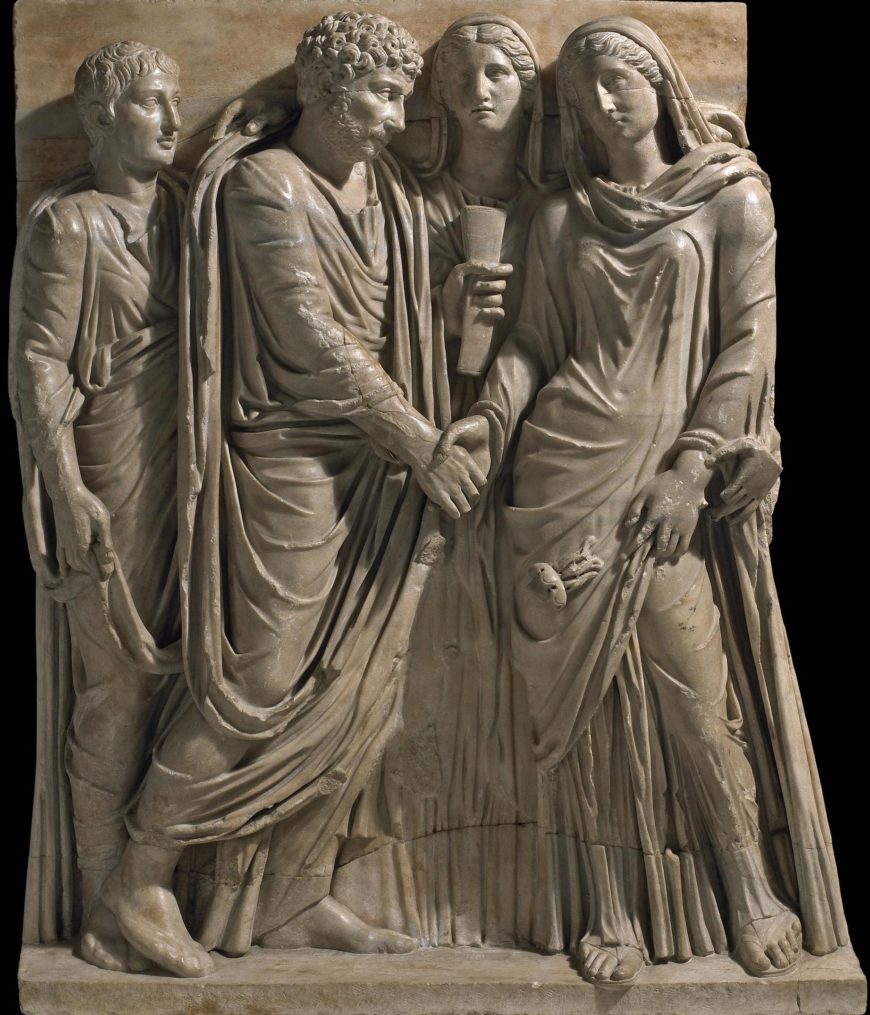
A Roman marriage ceremony (dextratrum iunctio, literally joining of hands). Sarcophagus, 2nd century C.E., Rome, marble, 98.4 x 78 cm (The British Museum)

Hands (detail), Peter Paul Rubens, Rubens and Isabella Brant in the Honeysuckle Bower, c. 1609–10, oil on canvas, 178 x 136.5 cm (Alte Pinakothek, Munich)
Dextrarum iunctio
The central meaning of the painting rests in the clasped right hands of the newlyweds. In ancient Rome the right hand was sacred to Fides, the deity of fidelity. The joining or clasping of the right hands by two people, known in Latin as dextrarum iunctio, had the significations of harmony, friendship, and loyalty. The gesture was used for meeting and parting, and closing a contract between two parties.
At the close of a marriage ceremony the right hands of the spouses were brought together by the matron of honor, who represented the goddess Juno, which indicated that the spouses had entered into a marriage under Roman law. It also symbolized fidelity between the couple after death, when the deceased would be reunited with their spouse.
The motif of two right hands clasped together appears frequently in Roman and Etruscan art: on coins; on fidelity and wedding rings; and on funerary monuments, which feature fidelity after death not only between the husband and wife, but also between parents and children, patrons and freedmen. This gesture of marital concord passed into Christian iconography and we see it in Renaissance and Baroque art.
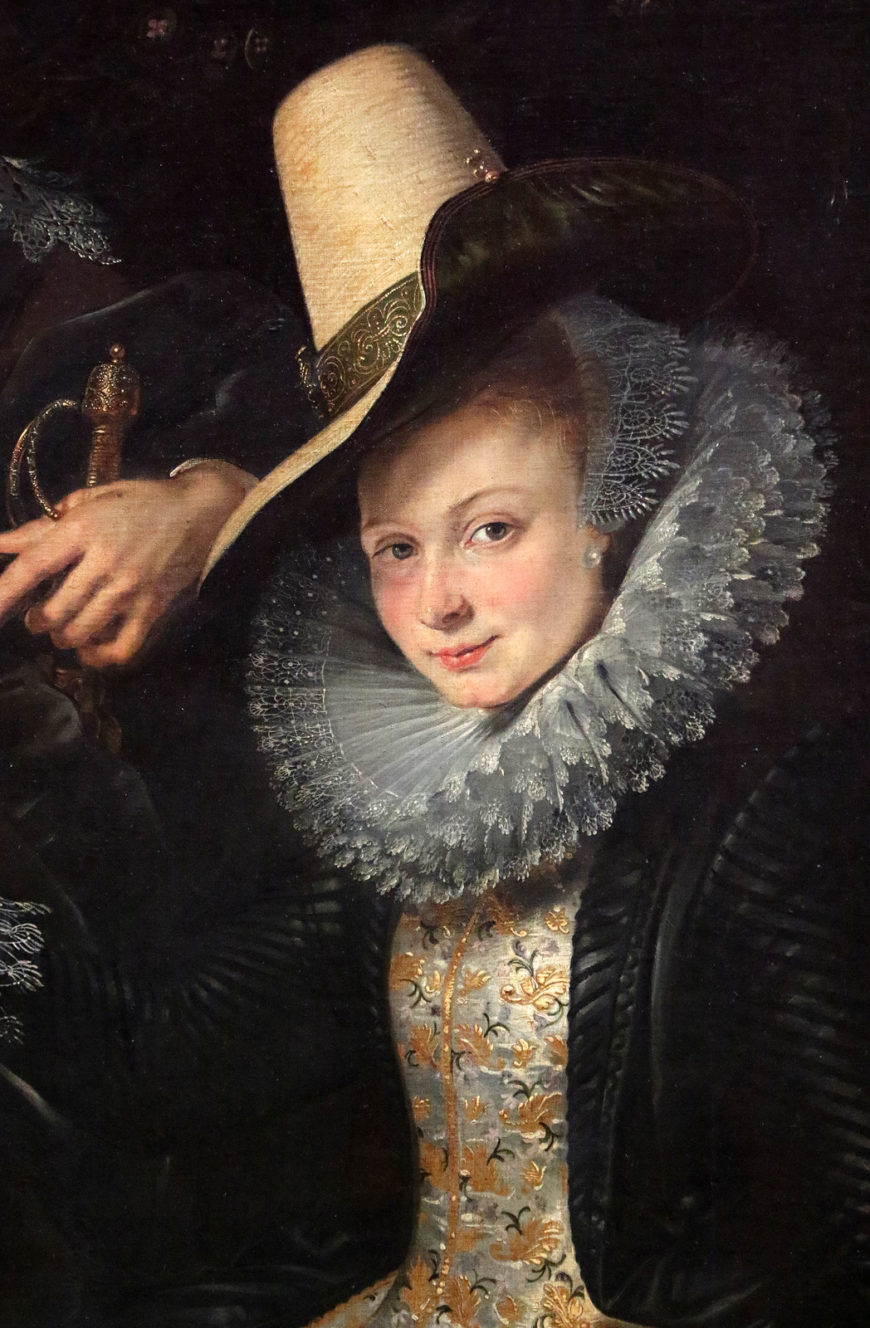
Isabella (detail), Peter Paul Rubens, Rubens and Isabella Brant in the Honeysuckle Bower, c. 1609–10, oil on canvas, 178 x 136.5 cm (Alte Pinakothek, Munich)
Dressing the part
Rubens and Isabella are dressed in the fashions of the time, which make evident their high socio-economic standing as members of the affluent in Antwerp society. Rubens is attired as a well-to-do chivalrous gentleman: a black hat with a gold-colored clasp, a golden satin doublet (a close-fitting padded jacket worn by men between the 15th and 17th centuries), and a pair of fine yellow-orange silk hose in a cross-legged pose; his left hand rests on the jewelled hilt of his sword. While Isabella is shown wearing a high-crowned straw hat, an out-sized lace ruff, a brocaded bodice, and a wine-red taffeta silk skirt. She holds a fan in her left hand which underscores her femininity and gentility.
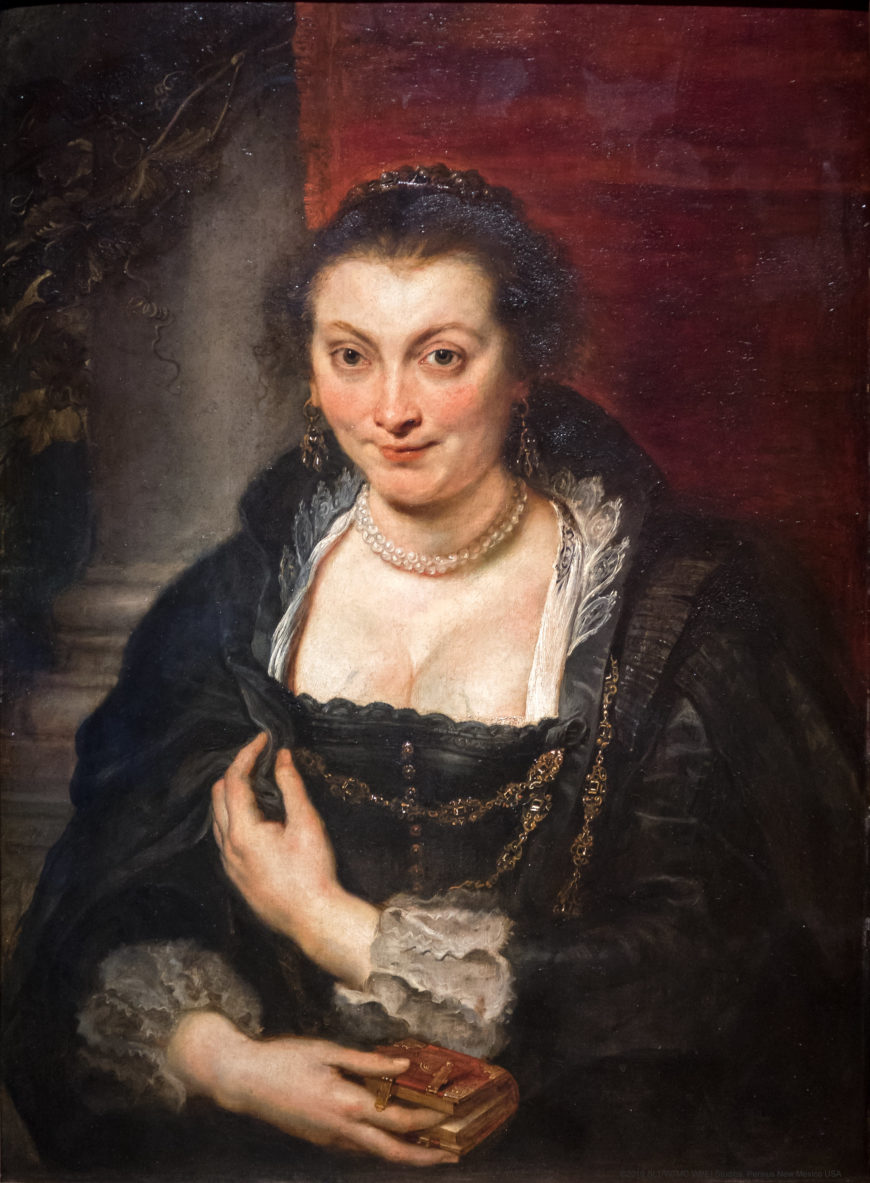
Peter Paul Rubens, Posthumous Portrait of Isabella Brant, c. 1625–26, oil on panel, 86 x 62 cm (Galleria degli Uffizi, Florence)
Epitaph
The death of Isabella Brant in 1625 was a desolating loss for Rubens. He wrote to the French Royal Librarian Pierre Dupuy on July 15, 1626:
Truly I have lost an excellent companion, whom one could love—indeed had to love, with good reason—as having none of the faults of her sex. She had no capricious moods, and no feminine weakness, but was all goodness and honesty. And because of her virtues she was loved during her lifetime, and mourned by all at her death. Such a loss seems to me worthy of deep feeling, and since the true remedy for all ills is Forgetfulness, daughter of Time, I must without doubt look to her for help. But I find it very hard to separate grief for this loss from the memory of a person whom I must love and cherish as long as I live.Letter to Pierre Dupuy on July 15, 1626 [2]
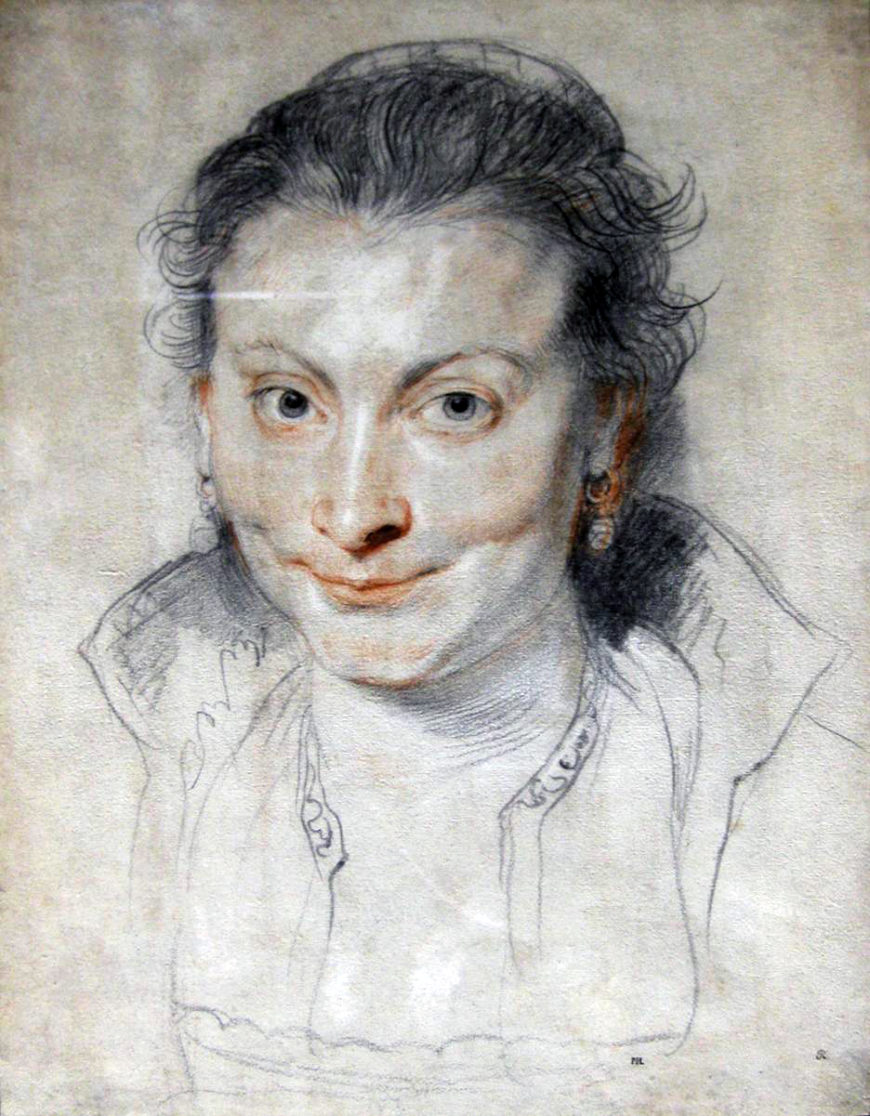
Peter Paul Rubens, drawing of Isabella Brant, c. 1621, black chalk, pen and brown ink on blue paper, 38.1 x 29.4 cm (© Trustees of the British Museum)
The posthumous portrait to commemorate Isabella which Rubens completed after his earlier celebrated chalk drawing reveals his abiding attitude towards his “excellent companion.” She is shown with her right hand holding a small book, in the same position as Rubens’s right hand in The Honeysuckle Bower. This time, however, Rubens is not there to support it. Instead, she cradles her own right breast with her left hand. In the background is a column overgrown in vine, which possesses the same emblematic significance of the dead tree, as in the Latin motto: Amicitia etiam post mortem dvrans (Friendship lasting even beyond death), which appears in Andrea Alciato’s Emblemata. The portrait is thus a painting of both loss and the promise of eternal life and love.


